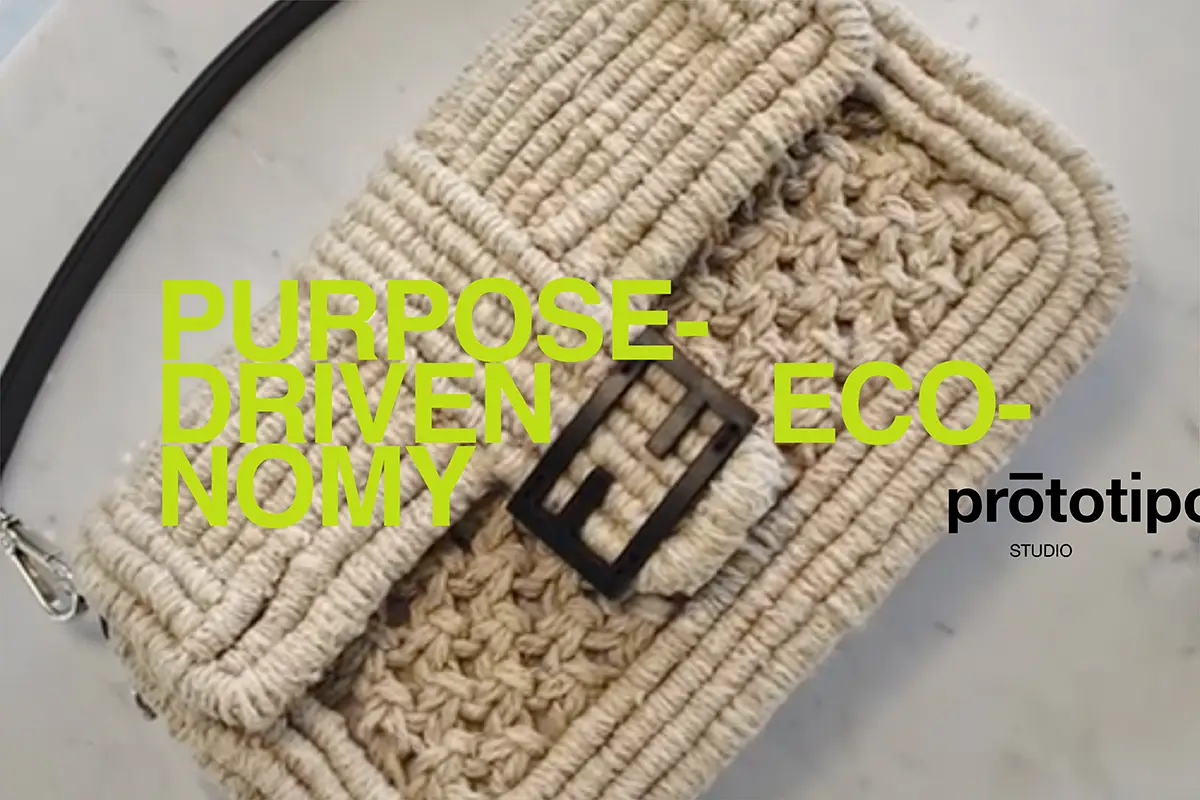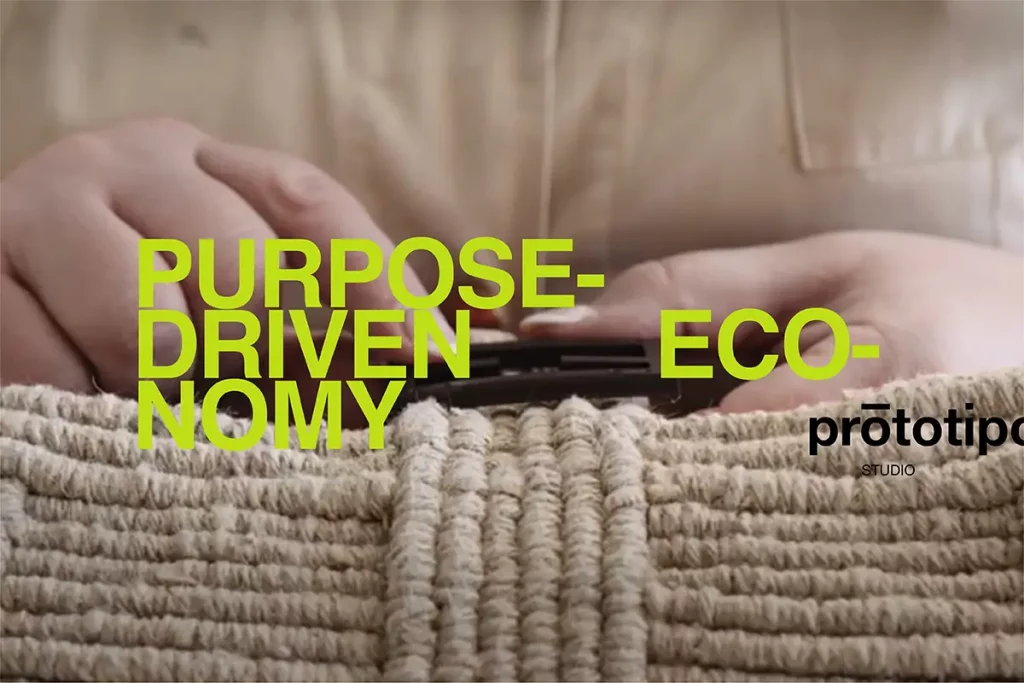Running a business means giving profit to the owner and workers, as well as the community and the area where the business grows: purpose economy is a successful strategy for 2024
What is a purpose-driven economy? Definition, meaning and opposite
Purpose economy is a productive and economic activity that adds to the primary purpose of profit, the complementary purpose of good for the community and the area to which it belongs. Purpose Economy is a definition coined by Aaron Hurst to describe how work is changing to reflect the desire amongst employees to realize a higher societal purpose in their work. It is a way of defining an ethical entrepreneurship.
Let’s take a step back and remove the ethical value: entrepreneurship means doing business, that is, creating a good that brings profit both for the owner of this business and for those who work in this business. Adding the ethical value, doing enterprise means that in addition to the gain of the owner and workers, the enterprise produces a concrete good for the community and the area, in which the enterprise is born and proceeds. In simpler words: purpose economy teaches that one does not work just to make a profit, but to improve the lives of all.
The question of what is purpose economy was posed to me during Terraviva in Bologna at the end of November, at a Dams lecture hall I was attending in response to an invitation from Gaia Trussardi, who of some parts of this review, was the curator.
Purpose economy and the Italian textile sector in Milan
Keeping to my context, and considering the purpose economy, I stayed in the textile industry in Italy. In this country, the textile industry is codified by what can be understood as fashion internationally – considering how much, of all fashion, is produced in Italy. Fashion is an industry and trade that still activates skilled jobs, trades, and paths to stimulate the dreams of ambitious youngsters (unfortunately, today’s figures indicate diminished this collective sentiment due to a reputation of fashion damaged by consumerism).
Thirty years ago, Milan was the capital of this industry: Armani, Versace, Missoni, Fendi, and Valentino. Everything was invented and made in Italy, everything was catalyzed in Milan. In Paris couture was being paraded, in Milan ready-to-wear was being invented. Both the dichotomy and the hegemony were lost. The reasons cannot be summarized here.
Two examples: the first is traditional entrepreneurship, the second is purpose economy
In this text, I would like to limit myself to giving two examples: the first is a generic outline of traditional entrepreneurship as we commonly understand it; the second, is a chronicle of an ongoing attempt at purpose economy. As they teach in every school of journalism, you start with the case that you think is negative, wrong, that you somehow want to belittle – and then later enter the positive eventuality that will linger in a reader’s impressions, even in reaction. (When it comes to political journalism, the second case belongs to the political side for which the editor stands.)
Enterprise and finance: the entrepreneur, lender and financier – fast fashion projects
Entrepreneurship is born when the person who owns an idea meets a financier. Likewise, it happens that the financier is a financier, a professional who has capital with the purpose of multiplying it: it does not matter producing what, as long as the capital multiplies. Capital becomes resources for a fast fashion brand: that is, increasingly, a project of producing and trading polyester and spandex clothes imported from China, advertised on Meta, and paying a TV celebrity, Italian or American. Rather than on the first part – production – capital will go on the second, trade, and on what trade is a driving force: communication.
If well managed and thought out, it can happen that communication becomes smoky, and everyone becomes convinced that behind that big smoke, rather than an engine, there is a dragon. Glorying in the flames of the dragon, the financier sells the brand and gets a positive return on the initial investment. Whoever buys the brand, will inject further capital, repeating the process with an extra zero, convincing the listener that behind the smoke, there is no longer one, but there are two, dragons. The process repeats itself until – whether because of a bureaucratic contingency in Asia or an American antitrust law – it may happen that the numbers don’t add up: the first decision is to cut the budget to communication. Without communication, the smoke clears, and instead of a dragon, a match appears in ashes.
It’s about fast fashion: brands of sexy clothes that leak microplastics with every wash; brands that proceed with sponsored posts by entrusting marketing budgets to an American company like Meta that invented an algorithm designed to monetize people’s envy; brands that made girls rich on a photoshopped female aesthetic. Yes, brands that have achieved considerable sales – one of which was acquired by the son of the millionaire who succeeded – if the father can do it, why can’t the son? If it goes well once, it will go well the second time. Finance today la is the mother of these definable short term projects – finance demands that an investment give its return in a short time. Finance must produce capital, the rest if it is not a nuisance, is a side dish as two roasted potatoes can be.
Purpose economy, Made in Italy and hemp
Let us move on to the second case, the one for which the writer takes sides: the example of a purpose economy. In Italy we feel Italian when there are soccer championships and when there is the Sanremo Festival – but that sense of unity also appears – I hope I am not being too utopian – when we remember that the whole world wants to buy what we make here – it is called Made in Italy. Made in Italy is synonymous with done right, done right – I was saying above: all the fashion brands, come to produce here. Even brands that sum up the French essence – Dior, Chanel, Louis Vuitton – present a label that says Made in Italy.
When we read Made in Italy, we have to remind ourselves that, unexpectedly, no textile fiber can be grown in Italy. All the natural textile fibers we process in Italy are imported from abroad. There is no exception, to date – but only one possibility: hemp.
Hemp textile fiber: natural fibers, CO2 sequestration: hemp is the pig of agriculture
Hemp fiber is the only textile, natural, vegetable fiber that can be grown in Italy. We used to be the world’s largest producer of hemp, until the second half of the twentieth century – when synthetic fibers entered the market, turning Lake Orta into a puddle with no more life. Cheaper and more easily processed, synthetic fibers gave the start to microplastic pollution, and the start to what would become fast fashion from ready-to-wear.
Any textile project that wants to process hemp fiber hopes to stimulate a market such that the Italian hemp supply chain is an example of a purpose economy. Giving credit and commission to an industrial hemp supply chain means giving a chance for better profits to Italian farmers by proceeding with regenerative crops.
Hemp can sequester more CO2 than a hectare of forest if the construction industry would propose hemp lime to its clients by exposing its thermoregulatory performance; if the energy sector chooses hemp biomass as a renewable energy source. Thus discussing: hemp as the pig of agriculture, it is customary to say: that every part of it can be exploited. Hemp is the only raw material that does not have a counterpoint: from textiles to construction, from energy to food. (Without touching on the pharmacological, which, facing legal and bureaucratic pitfalls, to date is the top destination for hemp cultivation in the field).
Lampoon, a pragmatic commitment
It was 2019, which was one year before the pandemic. Some might suggest that collectively we had a hunch, someone else would reply don’t talk nonsense. I was at the time, as I am today, an editor – I repeated to myself that a newspaper like Lampoon, to remain consistent with an editorial line dedicated to human respect, diversity and human frailty, and sustainability in general, should have a pragmatic commitment that went beyond words. I wanted Lampoon to have a flag. A dream yes, but not a utopia; an action to be sustained. Comparing myself to the publishing landscape in Europe and America, Lampoon represents Milan, then and now. I wanted Lampoon to engage in an operation dedicated to Milan, capable of telling Milan’s story.
Lampoon, Forestami and Stefano Boeri – the urban plantings
I asked Stefano Boeri for an appointment. The Bosco Verticale was already an iconic sign of Milan. It was not just a building, but a message: trees, let’s think with trees, let’s place trees in the sky. Together with Boeri, the Mayor of Milan had launched the Forestami initiative: that is, to plant three million trees in Milan by 2030. I began to look into the details. I held meetings to evaluate the bureaucratic process through which Lampoon could catalyze the raising of funds: Forestami had to resolve an impasse with the revenue agency to receive not only donations but also sponsorships (an impasse that after four years does not seem to have been resolved).
I followed the operations and propositions: by linking a grant to a planting project in a defined area, the narrative of that intervention would facilitate a return on investment (even today, this is not possible). I analyzed urban areas: I understood how it is more difficult to reforest the countryside, compared to cities, and that the problem was not to plant a tree, but to find land where this tree could be planted.
Besides being an editor, I am a journalist: a journalist is a curious person by profession. For every piece of information I retrieved, for every conversation I opened, for every passage I understood – I wanted to know more: I was interested in everything that could relate to forestry, urban and rural, everything that could be connected to so much.
Those who read now might have the feeling of a digression. Not so, because it is precisely by coming to regenerative agriculture that all my concentration has been catalyzed on the hemp supply chain in Italy. From offsetting carbon credits to biomass for renewable energy – it became clear to me that all hemp could and should catalyze the transition that will lead from traditional agriculture to regenerative agriculture. Countering consumerism, divesting from plastic, and ethical responsibility for anything that could be defined as a contemporary luxury – today they sound like a new orthodox creed that grants me pride.
Purpose economy and the hemp supply chain in Italy: Prototipo Studio
Prototipo was born this way: more precisely, it is called Prototipo Studio because it is a study, research, and experimental work. Prototipo is a company that sells hemp yarn and fabrics – as of today, not only hemp and not only Italian hemp – because as of today, there is no Italian hemp except in projects supported by companies that become patrons (among them, Fendi commissioned a macramé bag made of pure and only Italian hemp).
Prototipo Studio is an independent brand – a collection of blouses, jackets, pants and shirts – always with hemp, pure or mixed with other natural fibers-wool, cotton, linen, silk. Never, not even in the tiniest part, will Pototipo work with a synthetic fiber. Prototipo, reaching profit, will ask farmers to grow hemp and take back its straw, guaranteeing a better source of income than intensive crops. It sounds like a naive utopia, but instead, it is just a purpose economy.




















